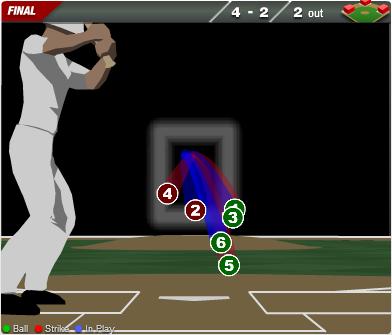When the Pirates acquired Lastings Milledge last June, most of the trepidation expressed by fans and members of the media focused on his poor off-the-field reputation. This was particularly concerning to some because he was traded for Nyjer Morgan, who was known to have a very positive impact in the locker room. Personally, I felt that many of Milledge’s issues had probably been exaggerated to some degree. I was chiefly worried about baseball-related issues, namely his poor defense and free-swinging ways at the plate.
Milledge was a model citizen after the trade last year and he has taken that to new heights in 2010. His hustle on the field has been borderline ridiculous, including all-out sprints on routine pop-ups. All reports indicate that he has attacked every day at the park with extreme enthusiasm. That sort of passion can be very valuable in a sport like football, but it can be detrimental in the game of baseball. While it is obviously beneficial to play with passion, it is also important to stay under control. And that brings me to my main point.
On Friday night, Milledge gave the Bucs the win with a ninth inning RBI single. On Saturday night, he was presented with the same opportunity. With closer Francisco Cordero struggling with his control, Milledge came to the plate in the ninth with the bases loaded, two outs and the Pirates trailing by one run. He worked the count to 2-2, including two pitches that were just off the outside corner. He watched another fastball soar low and emphatically pumped his fist as he stepped out of the box. From my seat in section 214, I could almost see the adrenaline pumping through Milledge’s veins. The park was electric, as the fans rose to their feet for the payoff pitch. It was an exhilarating moment.
In his young career, Milledge has swung at more than 30% of pitches outside the strike zone. In other words, he is not known for his patience. Combining a pumped-up Milledge with this particular situation (tying run on third, winning run on second and the crowd buzzing) seemed to be the perfect recipe for an overanxious swing at a pitch out of the zone. I was a bit concerned as Milledge stepped back into the box. Suddenly, he asked for time and stepped out. Milledge walked slowly away from the plate and took several deep breaths. Then he stepped back in and watched a slider zip just below the knees for ball four, tying the game.
I was reminded of an old interview with former Pirates closer Jim Gott, regarding a game against the Mets in June 1988. The Pirates led 8-7 in the ninth, and Gott retired the first two batters he faced. Three Rivers Stadium was rocking as Gott jumped in front of Howard Johnson, 1-2. When catcher Mike LaValliere called for a fastball on the next pitch, Gott asked for time and summoned LaValliere to the mound. Gott wanted to go with a slider, and he stepped back to the rubber feeling comfortable that he and his catcher were on the same page. But LaValliere again called for the fastball. Instead of stepping off again, Gott went with the fastball grip and “threw an unconscious pitch.” Johnson lifted it over the right field wall to tie the game, and the Mets would win in extra innings. In the interview, Gott regretted letting himself become caught up in the moment, and used it as a reminder that he needs to throw every pitch with a purpose.
On Saturday, Milledge easily could have lost his focus in the intense atmosphere at PNC Park. Instead, he delivered a terrific at-bat in a high leverage situation, and the Pirates won the game because of it. As I mentioned earlier, Milledge has swung at more than 30% of pitches out of the strike zone in his career. So far this season, that is down to about 26%. That is right around league average, which is very encouraging. Let’s hope that trend continues throughout the season.
Seriously, how pretty is this MLB Gameday screenshot from Milledge’s at-bat on Saturday? Think about the fact that he laid off pitches one and three, and try not to smile.



